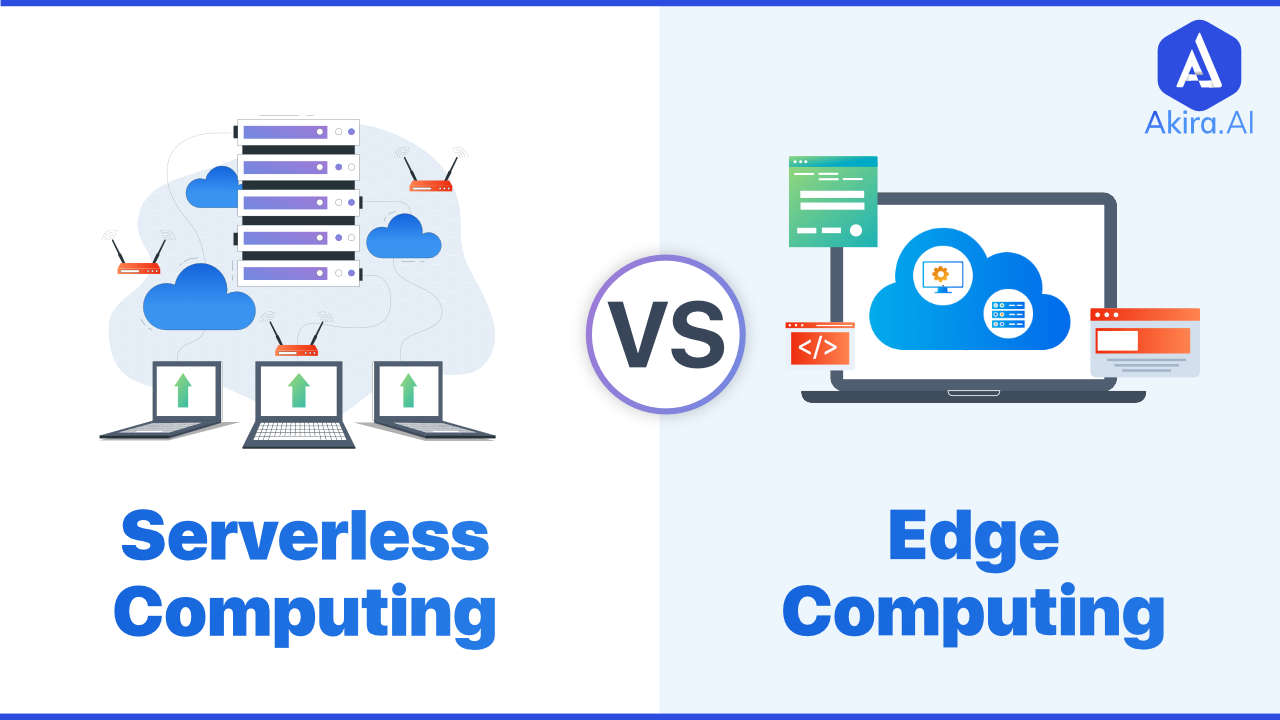Serverless Computing Optimization & Edge Functions
Uncategorized
In the rapidly evolving world of cloud computing, serverless computing has emerged as a revolutionary approach to building and deploying applications. Unlike traditional computing models, where developers manage the infrastructure, serverless computing abstracts away the need for managing servers, allowing developers to focus solely on code. This paradigm shift has made it easier and more cost-effective to build scalable applications. However, optimizing serverless architectures and integrating them with edge functions is essential to achieve maximum performance and efficiency.
In this article, we will explore the concept of serverless computing optimization, how edge functions fit into the equation, and how businesses can leverage these technologies for faster, more efficient application performance. For students interested in a career in cloud computing, serverless architectures, and application optimization, enrolling in the Best college in Haryana for B.Tech. CSE+MBA Integrated can provide the necessary expertise to excel in these cutting-edge fields.
What is Serverless Computing?
Serverless computing is a cloud computing model where developers write code without having to worry about managing the underlying infrastructure, such as virtual machines or servers. Instead of provisioning and maintaining servers, developers deploy individual functions or pieces of code, which are executed in response to specific events or triggers. These functions are hosted on a cloud provider’s infrastructure, and the provider automatically handles the scaling and execution.
The key advantage of serverless computing is that it allows for automatic scaling, meaning that applications can handle fluctuations in traffic without manual intervention. Since users only pay for the actual execution time of the function, serverless computing can be highly cost-effective. Examples of serverless platforms include AWS Lambda, Azure Functions, and Google Cloud Functions.
Key Benefits of Serverless Computing
- Cost Efficiency: In a traditional infrastructure model, businesses have to pay for unused resources, such as idle servers. In serverless computing, businesses only pay for the execution time of the code, making it more cost-effective, especially for variable workloads.
- Automatic Scaling: Serverless computing automatically scales based on demand. If an application experiences a spike in traffic, the cloud provider automatically provisions additional resources to handle the load, ensuring optimal performance without any manual intervention.
- No Server Management: One of the most significant advantages of serverless computing is that developers do not have to manage or configure servers. This eliminates the complexity of infrastructure management, allowing developers to focus solely on writing code and building features.
- Faster Development Cycles: Since developers can deploy individual functions without worrying about the underlying infrastructure, the development cycle becomes faster. New features and updates can be rolled out more quickly, improving time-to-market.
- High Availability: Serverless platforms are designed to provide high availability and fault tolerance. The cloud provider ensures that functions are always available, even in the event of hardware failures.
What is Serverless Computing Optimization?
While serverless computing offers numerous benefits, optimizing serverless architectures is crucial for ensuring high performance, minimizing latency, and controlling costs. Below are some key aspects of serverless optimization:
- Cold Start Optimization: One common challenge with serverless functions is the cold start problem. When a serverless function is called after being idle for a while, the cloud provider needs to initialize the function, which can cause a delay. This delay is known as a “cold start.” Optimizing cold starts involves minimizing the initialization time by reducing the function size, optimizing code, and using smaller dependencies.
- Efficient Resource Allocation: Serverless platforms allocate resources based on the demand for functions. Optimizing resource allocation means ensuring that functions are allocated enough resources to run efficiently without over-provisioning, which can lead to unnecessary costs. It’s important to choose the right memory and CPU configurations for each function.
- Function Timeout Management: Serverless functions have a timeout limit, after which they are automatically terminated. Optimizing function execution time is critical to ensure that the function completes its tasks within the time limit. This can be achieved by optimizing the code, reducing dependencies, and splitting large tasks into smaller functions that execute faster.
- Event-Driven Architecture: Serverless computing thrives in an event-driven environment. Optimizing the event triggers and ensuring that they are set up correctly can help in minimizing delays and improving the overall efficiency of serverless applications.
- Monitoring and Logging: Effective monitoring and logging are essential to optimizing serverless architectures. By collecting real-time data on function execution, developers can identify bottlenecks, failures, and areas for improvement. This can help in troubleshooting issues and optimizing the system for better performance.
What are Edge Functions?
Edge functions are a key concept that complements serverless computing. They are functions that run at the “edge” of the network, closer to the end users, rather than in centralized cloud data centers. This proximity to users allows edge functions to reduce latency and improve application performance by executing code closer to where the data is generated or consumed.
Edge functions are particularly useful in scenarios where low latency is crucial, such as in content delivery networks (CDNs), real-time data processing, and IoT applications. Instead of sending data back and forth to a centralized cloud server for processing, edge functions process data at the edge of the network, reducing the need for long data transmission times and improving overall system responsiveness.
Benefits of Edge Functions
- Reduced Latency: By processing data closer to the source, edge functions minimize the time it takes for data to travel between the user and the server, resulting in lower latency and faster response times.
- Improved Performance: Edge functions help optimize the user experience by offloading computational tasks from centralized servers. This reduces the load on cloud infrastructure and ensures better performance for end users.
- Cost Savings: Since edge functions reduce the amount of data that needs to be transmitted to and from the cloud, they can reduce data transfer costs and cloud storage expenses.
- Scalability: Edge computing scales easily to accommodate a growing number of devices and users. It allows for the distribution of computational tasks across multiple locations, ensuring that systems can handle large-scale deployments without sacrificing performance.
- Security and Privacy: Edge functions can process sensitive data locally, which helps to address privacy concerns and reduce the risk of data breaches. By processing data at the edge, businesses can also comply with data sovereignty regulations that require data to be stored and processed within specific geographic regions.
Serverless Computing & Edge Functions Working Together
When combined, serverless computing and edge functions can offer significant benefits for modern applications. Serverless computing provides the infrastructure to deploy functions at scale, while edge functions optimize performance by processing data closer to the users. Together, they create a highly efficient, low-latency, and cost-effective architecture for building and deploying applications.
For example, consider a content delivery network (CDN) that serves video content to users worldwide. By using edge functions to process video content at the edge of the network, the CDN can reduce the time it takes to deliver content to users. Additionally, by using serverless computing to handle the backend processing, such as user authentication, payment processing, and content recommendations, the system can scale efficiently and reduce costs.
How to Specialize in Serverless Computing and Edge Functions
For students who want to specialize in serverless computing, edge functions, and application optimization, pursuing a degree at the Best college in Haryana for B.Tech. CSE+MBA Integrated can provide the necessary skills and knowledge. A CSE+MBA Integrated program with a focus on cloud technologies, distributed systems, and application optimization will enable students to build a strong foundation in these cutting-edge technologies.
Through a comprehensive curriculum, students will gain hands-on experience with serverless platforms, edge computing, and cloud infrastructure. This will prepare them for careers in cloud architecture, application development, and optimization, and position them to tackle the challenges of modern distributed systems.
Conclusion
Serverless computing and edge functions represent two of the most innovative advancements in cloud and distributed computing. Together, they offer powerful solutions for optimizing application performance, reducing latency, and improving scalability. As businesses continue to adopt these technologies, the demand for professionals with expertise in serverless computing and edge functions will grow. For students looking to pursue a career in this exciting field, enrolling in the Best college in Haryana for B.Tech. CSE+MBA Integrated will provide the education and experience needed to succeed in the world of cloud computing and application optimization.
Serverless computing and edge functions represent a significant evolution in cloud computing, offering enhanced scalability, efficiency, and cost-effectiveness. As organizations increasingly adopt cloud-native architectures, optimizing serverless computing and leveraging edge functions have become crucial for improving application performance and reducing latency. These technologies eliminate the complexities of traditional infrastructure management, enabling developers to focus on building and deploying applications seamlessly while cloud providers handle resource allocation, scaling, and maintenance.
One of the key benefits of serverless computing is its on-demand execution model, which ensures that resources are allocated only when needed. This leads to significant cost savings as organizations no longer have to pay for idle server capacity. Additionally, serverless architectures enhance scalability, allowing applications to handle fluctuating workloads efficiently. Whether it’s processing real-time data, running microservices, or automating backend operations, serverless computing provides the agility needed for modern application development.
Edge functions, on the other hand, extend the capabilities of serverless computing by bringing computation closer to the data source. Unlike traditional cloud computing, which relies on centralized data centers, edge computing processes data at the network edge, reducing latency and improving response times. This is particularly beneficial for applications that require real-time processing, such as IoT devices, autonomous systems, video streaming, and AI-driven analytics. By reducing the need for data to travel long distances, edge functions enhance performance, lower bandwidth consumption, and improve user experience.
Despite these advantages, optimizing serverless computing and edge functions presents several challenges. One major concern is cold start latency, where serverless functions experience delays when invoked after being inactive. To mitigate this, developers can leverage techniques such as provisioned concurrency, caching mechanisms, and optimized runtime environments to ensure faster execution. Another challenge is resource limitations, as serverless functions have execution time constraints and limited memory. Efficient code optimization, modular function design, and the use of lightweight containers can help overcome these constraints and improve performance.
Security is another critical aspect of serverless and edge computing. Since applications are executed in a distributed environment, organizations must implement strong authentication mechanisms, encryption protocols, and API security measures to prevent unauthorized access and data breaches. Additionally, adopting Zero Trust security models and runtime protection solutions can enhance security in serverless architectures.
Looking ahead, the future of serverless computing and edge functions is promising, with continued advancements in AI-driven optimizations, containerized workloads, and hybrid cloud solutions. AI and machine learning are being integrated into cloud platforms to automate resource allocation, improve performance monitoring, and optimize serverless function execution. The emergence of 5G networks will further accelerate edge computing adoption, enabling ultra-low-latency applications across industries such as healthcare, autonomous vehicles, and smart cities.
Educational institutions, including top colleges in Haryana and Delhi NCR, are offering specialized programs in cloud computing, serverless architectures, and edge computing to equip future professionals with the skills needed in this evolving landscape.
In conclusion, optimizing serverless computing and edge functions is essential for building highly scalable, efficient, and low-latency applications. As technology advances, organizations must embrace best practices, security measures, and AI-driven optimizations to fully leverage the potential of these innovations. By doing so, they can create resilient, cost-effective, and high-performance digital solutions for the future.
